Hamyang Ildoo Gotaek
2021-04-09
50-13, Gaepyeong-gil, Jigok-myeon, Hamyang-gun, Gyeongsangnam-do
+82-55-962-7077
The Old House of Ildu in Hamyang is the birthplace of Jeong Yeo-chang (1450-1504, pen-name: Ildu), a great Neo-Confucian scholar of the Joseon Dynasty. It is situated at the center of Gaepyeong Village, where many members of the Hadong Jeong clan and the Pungcheon Roh clan settled, in Jigok-myeon, Hamyang. The house is considered an invaluable historic material for studies on the architectural style of the 17th to 18th centuries and the history of the Joseon Dynasty.
The house covers a total area of 9,917m2 and consists of the haengrangchae (servants’ quarters), sarangchae (a detached building used as a reception room for male guests), jungmunganchae (middle gate building), anchae (the inner house), araechae (outhouse near the gate), gobang (storeroom), shrine, gotganchae (warehouse), and a tall gate. Upon entering the house, visitors will notice an earthen wall that divides the sarangchae, which is built on a high foundation, from the other spaces so as to prevent visitors from looking inside the women’s spaces and shrine. The house’s most distinguished feature is the sarangchae, whose role and size were expanded, unlike other hanok houses at that time. The sarangchae was built in a “ㄱ”-shaped layout and is connected to the “ㅡ”-shaped jungmunganchae. Notably, the sarangchae’s numaru (attic, upper floor) is a well-designed library that attests to the scholarly spirit of Jeong. After entering via the Ilgagmun Gate (front gate with two posts and a roof), a middle gate comes into view. After passing this gate, there is the “ㅁ”-shaped anchae, or women’s quarters, with a courtyard. Then, after passing a room of the anchae, there is the gotganchae flanked by the shrine and the an-sarangchae.
Currently, the house provides a variety of accommodation including four rooms in the haengnangchae, two rooms in the an-sarangchae, and three rooms in the sarangchae. The latter two are equipped with outside toilets. In particular, the sarangchae, as the core space of the house, offers an open view of Seokgasan Mountain from the numaru (upper floor) of the Takcheongjae Building. Although the house is designed and decorated with antique household objects, furniture and interior items, the toilets and bathrooms are modernized for guests’ convenience.
As the Old House of Ildu has been designated as National Folklore Cultural Heritage No. 186, it is maintained by the local administrative office. However, Jeong Ui-gyun, an 18th-generation descendant of Jeong Yeo-chang, lives in a house in the orchard opposite the Old House of Ildu, and comes and goes constantly. Although cooking is not possible at the house, Jeong allows guests to have a garden party or cook in his large garden next to the detached building.
Jungon Head House
2021-04-09
13, Gangdong 1-gil, Wicheon-myeon, Geochang-gun, Gyeongsangnam-do
+82-10-2518-4727
Located in Geochang County in Gyeongsangnam-do Province, the Head House of Mr. Jeong On shows a peculiar style of ancient Korean architecture. Since the house is located in a basin surrounded by high mountains, it was built in overlapping style as the typical architectural style in the northern region in order to endure the cold. In addition, the "eyebrow" roof was added as protection from the frequent rain. The house is mainly visited by families on weekends and research organizations on weekdays. Visitors can enjoy various healing and cultural activities in the trekking course of Mt. Geumwonsan and the Suseungdae Amusement Park, which are 1km away. The Anchae is used by the owner family, and the Sarangchae, Jungmunchae, and Daemunchae are used as guest rooms. Groups can rent the entire Sarangchae building.
Wonhak Goga (Wonhak Old House)/ 원학고가
2025-08-13
109-5, Hwangsan 1-gil, Wicheon-myeon, Geochang-gun, Gyeongsangnam-do
+82-10-5359-2224
Located in Geochang, Wonhak Goga (Wonhak Old house) is regarded as the most beautiful hanok, or traditional Korean house, in the village of Hwangsan. Designated as Folk Material No. 17 in recognition of its value as a historic material, it is the largest and best preserved noble house in Gyeongsangnam-do Province, and is currently managed by Park Jeong-ja, the wife of the eldest son of the head family. It was originally opened to the public for the annual Keochang International Festival of Theater (KIFT) as there was insufficient accommodation to lodge the thousands of visitors to the festival. Therefore, the county suggested that Park provide people with a hanok accommodation to promote the village’s traditions. Accepting the suggestion, Park renovated the house by expanding the sarangchae room installing a modern-style washroom, and providing clean high-quality bedding. The house itself consists of seven structures in total including the anchae, sarangchae, jungmunchae, gotganchae, a tall gate, and a rear gate. Both the sarangchae and anchae have a half-hipped roof. Notably, the sarangchae has a total area of 99m2 and features a large girder and a round foundation stone. This traditional hanok house also boasts high-quality, refined interior decoration. The Geochang area is well known for both the Suseungdae scenic point, whose splendid surroundings include pure crystalline water, rocks, and a pine grove, and the Keochang International Festival of Theatre (KIFT) which is held every summer. After passing the main gate of the Suseungdae scenic point, in Whicheon-myeon, Gaochang-gun, and continuing along the road, visitors will come to Hwangsan Village, where a 600-year-old-zelkova tree welcomes them. In addition, visitors can enjoy the mural paintings created as part of a public art project by Geochang County while walking along the 1.2km-long stonewall (designated as a Gyeongsangnam-do Folk Material). The village of Hwangsan consists of two districts, one of which contains about fifty 100- to 200-year-old hanok houses, as well as Wonhak Goga, which has stood at the center of the village for about 500 years. Wonhak Goga, or the Old House of the Shin Clan, was originally built by Shin Gwon (pen-name Yosu), but was then demolished and rebuilt by Shin Jong-sam, a 10th-generation descendant of the family, in 1927. It is also a renowned family house and has remained a symbol of the family’s wealth and authority for many generations. Park’s father-in-law, Shin Do-seong, was a member of the National Assembly and worked as the Ministry of Unification, while her husband, Shin Wi-beom, worked as a school juristic person, gaining people’s confidence and trust. Furthermore, the house stands in an auspicious location in terms of geomantic principles, according to which the family’s descendants will have a peaceful and prosperous life for the next 400 years. Park hopes that guests will enjoy their stay amid the serene atmosphere of this old hanok house.
Umyeongri [Korea Quality] / 우명리 정씨고가(효리댁) [한국관광 품질인증]
2023-04-13
6, Hyori-gil, Sudong-myeon, Hamyang-gun, Gyeongsangnam-do
+82-70-4257-4110, +82-10-5356-4116
The village name “Woomyeong" means "The village where the oxen moo" in Korean. According to Korean feng shui, the village looks like an ox regurgitating in a comfortable crouching position. For farmers in the olden days, an ox was the symbol of prosperity and peace. This village has been regarded as one of the most fertile and prosperous areas in Korea. It was also the hometown of a famous scholar named Jeong, whose house now serves as a pension. The village has another name, “Hyo-ri,” which means "a village of devoted sons" in Korean, because the village was famous for having many devoted sons throughout generations. The pension is commonly called "Hyo-ri House" among the locals because the big house with a large field is regarded as the center of the village. The owner of the house transformed it into a pension in 2013, because he thought it would be nice to provide a comfortable place for visitors where they can just lie down on the wooden floor and look up the sky. There haven’t been many guests so far, but the owner says that his house can serve as a place where the guests can benefit from the good energy surrounding the village and learn history and culture during their stay. Guests are also welcome to pick vegetables from the field during their stay in the traditional Korean house and learn how the Korean scholars lived and studied in a farming family in the past.
YETMASIL / 옛마실펜션
2025-08-13
65, Majeon 1-gil, Irun-myeon, Geoje-si, Gyeongsangnam-do
+82-55-682-2141
Yetmasil Pension located in Oknim-ri, Goeje, Gyeongsangnam-do is a traditional Korean house with area of 19,834㎡. Built only with red clay and pinewood and furnished with a bed and a floor-heating system, it’s very environment-friendly and comfortable to stay in. It also has a beautiful yard with pine trees, natural rocks, and wild flowers collected by the owner over the years. The guestrooms with living room, kitchen, and bathroom can accommodate four to six people. At night when the weather is clear, you can also see fireflies from the pension.
SONANGGOO [Korea Quality] / 소낭구펜션 [한국관광 품질인증]
2020-09-09
83, Majeon 1-gil, Irun-myeon, Geoje-si, Gyeongsangnam-do
055-682-2141, 010-6776-6054
Sonanggo Pension is built on a 19,834m² area overlooking Jisepohang Port. The word “sonanggu” is a Gyeongsangnam-do vernacular for “pine tree." As the name suggests, there are lots of pine trees in the area. The pension consists of two log cabins and a yard, both of which are situated right in the middle of a pine grove. The owner of the pension built the buildings here so that guests can enjoy a panoramic view of the landscape of Jisepo Port, with the buildings facing south for sunlight. Two two-story buildings are built with logs and red clay, giving them a natural look and feel. The garden is full of flowers, trees, and wild flowers grown by the owner for over 17 years. The yard with stair steps is 6,611m² wide, and it mainly consists of pine trees and natural rocks. There are tables, low wooden bench, and traditional Korean lookout hut for the guests to relax and enjoy the surrounding nature. The pension has a total of 10 guestrooms in two buildings named “Yanghandang" and “Hwasaengdang.” There are rooms of different sizes that can accommodate between two and eight people, so be sure to choose the right room to suit your needs when booking. All the guestrooms are furnished with modern kitchen and bathroom. In the yard are “Red Clay and Stone Plates” built with a traditional Korean floor heating system for those wishing to have a barbecue. You can also cook potatoes and Korean pancakes on the 4cm-thick stone plates heated by firewood.
Maesa Old house [Korea Quality] / 고성 최필간고택 [한국관광 품질인증]
2020-09-08
55, Hakdongdoldam-gil, Hail-myeon, Goseong-gun, Gyeongsangnam-do
+82-10-3824-4724
One of the outstanding features of the Old House of Choi Pilgan in Goseong, which is currently owned by Choi Yeong-deok, is the stone wall. Listed as Gyeongsangnam-do Cultural Property No. 178, it has higher stone walls than most other traditional Korean houses once owned by a noble family in the past. The village where this house is located can be easily found, since there is a road sign at the forked road with the Old Hakdong Stone Wall on the National Road toward Impo. Visitors to this site are advised to take a leisurely walk along the ancient stone walls instead of driving around them. This head house of Jeonju Choi Clan has been passed down to the eldest son of the family for 11 generations. With an area of 6,611m², the house consists of a room next to the main gate, the main building, a detached house with a wooden porch, a master bedroom used by the head of the household, and a small warehouse. The inner gate divides the house in half, each designated for male and female members of the household as was the tradition of the noble families in the olden times.
Chi-ong Art Center [Korea Quality] / 취옹예술관 [한국관광 품질인증]
2023-04-13
300, Sumogwon-ro, Sang-myeon, Gapyeong-gun, Gyeonggi-do
+82-10-4703-3668
The Chi-ong Art Center is a hanok-style culture complex situated amid a clean and quiet environment in Gyeonggi-do Province. The head of the art center, potter Kim Ho, originally ran a cultural life school for residents in Pocheon, but he settled at the foot of Chungnyeongsan Mountain in Gapyeong, Gyeonggi Province after the school was severely damaged by a huge flood in 1997. Kim established the center as a space to support the cultural and leisure activities of local residents and the creative activities of talented youth and artists. It took four years to build and comprises a gallery, seminar room, hanok accommodation, Korean restaurant, etc. The center attracts various types of guests including people who appreciate the beauty of hanok and the local landscape, family visitors, company groups, and couples among others. The overall structure of the center is very distinguished, and consists of three levels resembling staircases: the first level contains a Korean restaurant, the second level has a lecture room with a capacity of 60 persons, as well as a gallery with a pond and a pavilion set in a Korean garden; and the third level has guestrooms furnished with a toenmaru (a narrow wooden porch running along the outside of the building) and ondol floor heating, as well as a tall gate, a wide front yard, and tearoom. Although it was only built just over ten years ago, visitors say that it seems like an old hanok house because of the unvarnished roof tiles and the surrounding stonewall, which was built in the traditional dry-stone method using only local stones. The center offers diverse experience programs including tea ceremony, natural dyeing, mask, rice cake, and bean curd making programs, as well as a boudoir handicraft program. Its “prestige” program is the advanced tea ceremony class in which the head of the center teaches participants how to brew tea according to traditional etiquette, etc. As the Chi-ong Art Center has no TV or Internet, visitors have an opportunity to empty their heads and relax amid the serene environment, appreciate nature, take a walk in the garden or simply read a book.
Dagagada Hanok / 다가가다 한옥
2025-08-12
167, Pyeonghwa-ro, Hwacheon-eup, Hwacheon-gun, Gangwon-do
+82-33-441-1488
Dagagada Hanok located on Pyeonghwa-ro, Hwacheon-eup commands a panoramic view of the Bukhangang River, which originates from Paroho Lake and flows around Hwacheon. Only 2km from the place where the Hwacheon Trout Festival is held, and 3.5km from Bungeoseom Island where the Canoe Festival is held, the pension is a perfect place to stay for those visiting the area for these festivals. Hwacheon Bus Terminal is within 2.5km from the pension, and the pension also offers pickup service from the bus terminal. Dagagada Hanok has a total of six rooms, which are painted blue, yellow, purple, black, and green. The unique room interiors are made by none other than the pension owner, who majored in calligraphy. All the guestrooms include a cozy red clay room. The outdoor terrace commands a great view of the Bukhangang River, where guests can enjoy a barbecue party with their family, friends, or romantic partner. There is also a traditional tea house for guests to enjoy a sip of tea in leisure.
Gangneung Ojuk Hanok Village (강릉오죽한마을)
2025-08-12
114, Jukheon-gil, Gangneung-si, Gangwon-do
+82-33-655-1117
Gangneung Ojuk Hanok Village, Gangneung’s representative cultural space, exhibits the excellence and simple beauty of the Korean traditional house known as the ‘hanok’. Based on Ojukheon, the birthplace of Yi I (one of the two most eminent Korean Confucian scholars of the Joseon Dynasty), it was built to spread the ideas of Yi I and promote the excellent features of the Korean hanok to the world through a variety of traditional cultural experience programs. The village is situated next to Ojukheon House, where Yi I and his mother Shin Saimdang were born. It is also near Gyeongpo Lake, one of the most famous tourist attractions in Gangneung, and is only 1.8km away from Gangneung Olympic Park, which served as the ice sports venue of the 2018 PyeongChang Winter Olympic Games. Gangneung Ojuk Hanok Village has a total of 51 guestrooms, including a separate house, a detached house, a duplex-type with an upper floor (numaru), and other types of rooms. In particular, “Aeilje” is the only house with a bed and amenities designed for the physically disabled, including an entrance ramp and a spacious toilet and bathroom for wheelchair users. “Samuljae” (a lecture hall with a capacity of 40 persons) is also available to guests for up to two hours free of charge. Moreover, “Geoga” house, which is a hanok-type passive house, is an energy-saving structure equipped with a solar-paneled roof.
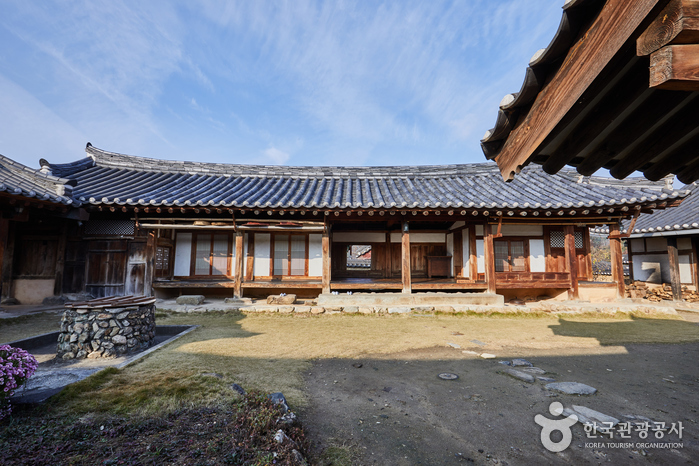
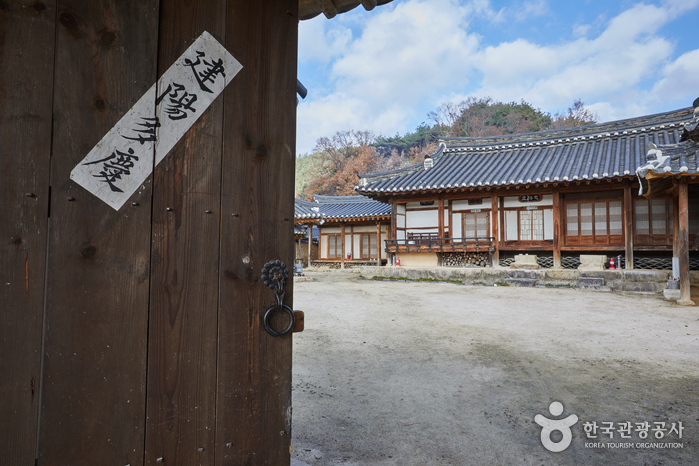
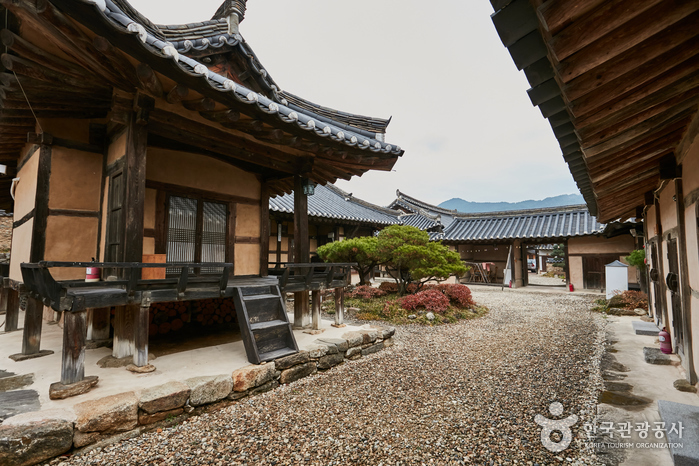
![Umyeongri [Korea Quality] / 우명리 정씨고가(효리댁) [한국관광 품질인증]](http://tong.visitkorea.or.kr/cms/resource/78/2572478_image2_1.jpg)
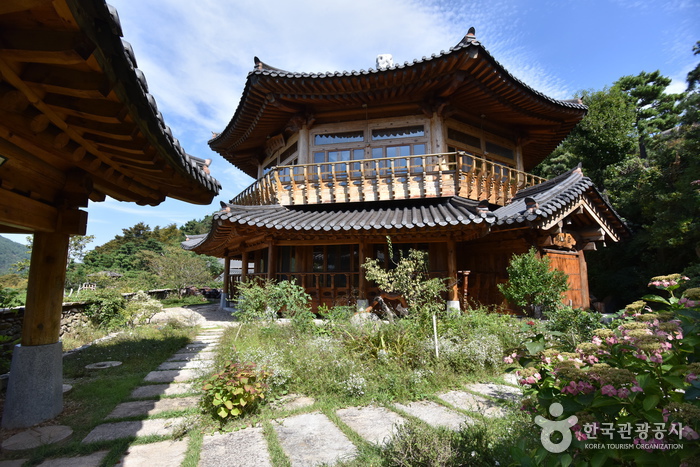
![SONANGGOO [Korea Quality] / 소낭구펜션 [한국관광 품질인증]](http://tong.visitkorea.or.kr/cms/resource/47/2576747_image2_1.jpg)
![Maesa Old house [Korea Quality] / 고성 최필간고택 [한국관광 품질인증]](http://tong.visitkorea.or.kr/cms/resource/07/2574707_image2_1.jpg)
![Chi-ong Art Center [Korea Quality] / 취옹예술관 [한국관광 품질인증]](http://tong.visitkorea.or.kr/cms/resource/93/2572393_image2_1.jpg)
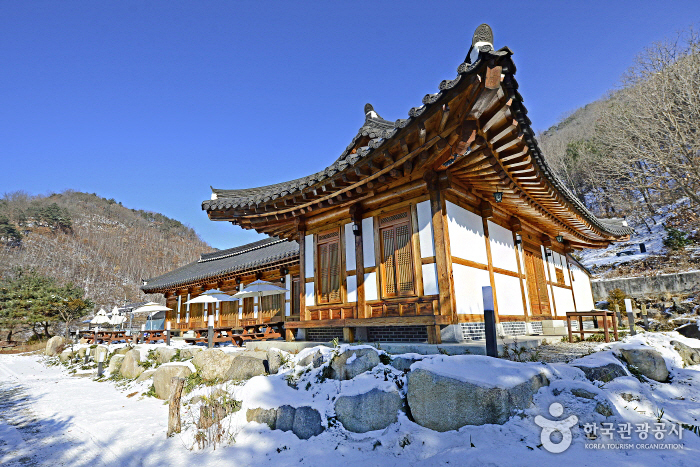
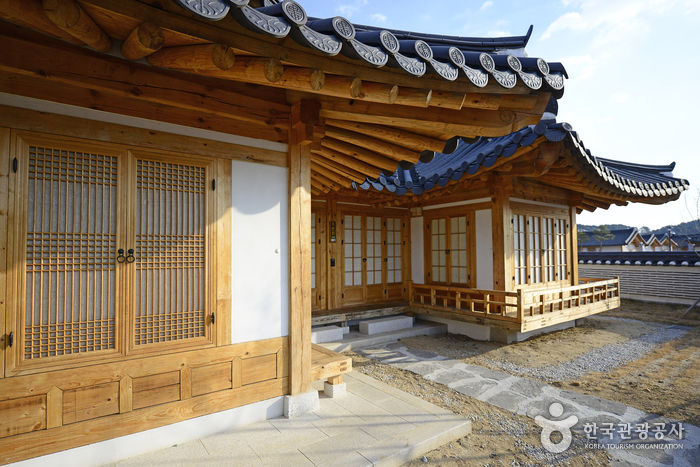
 Français
Français
 한국어
한국어 English
English 日本語
日本語 中文(简体)
中文(简体) Deutsch
Deutsch Español
Español Русский
Русский